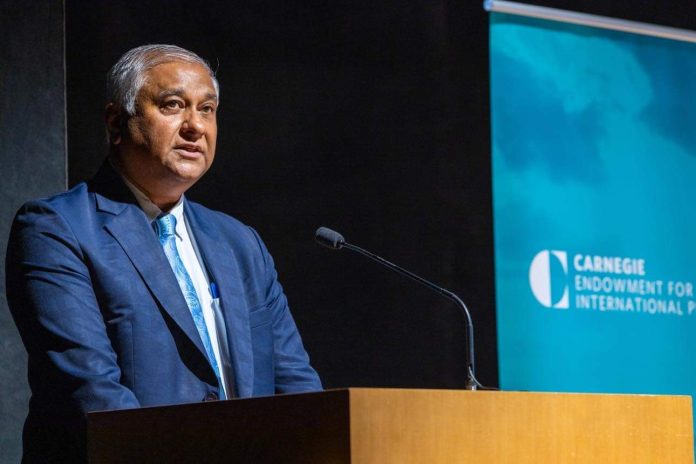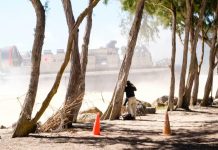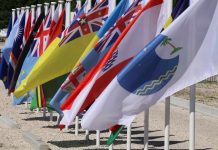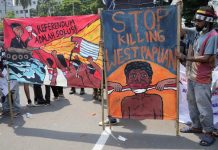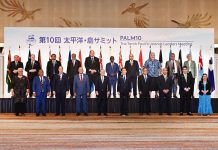By Satyendra Prasad
The Blue Pacific as an Ocean of Peace has evolved as one the core ideas of Prime Minister Sitiveni Rabuka and the Fijian Government. An early outline of the Blue Pacific as an Ocean of Peace was presented to Pacific Leaders at their meeting in Rarotonga last year. Fiji’s Prime Minister intends to present a fuller version of this concept to the next Pacific leaders meeting.
I offer suggestions for framing the Ocean of Peace as a foundational new proposal for consideration by Pacific’s leaders.
As Ocean of Peace as an inspiration
The core ideas for framing this proposal comes from the Pacific’s foundational documents and its operating values. This includes the Blue Pacific’s 2050 strategy and a commitment to working through consensus. The 2050 Strategy focuses the World’s attention to growing insecurity across our region arising from a cocktail of development failures, growing climate stresses and widening institutional weaknesses. It presents a road map to tackling these.
The UN’s Secretary General’s new Agenda for Peace provides helpful backdrop to this concept. This new Agenda for Peace acknowledges the reality that the global institutions that have been the bedrock for peace, development and security in the aftermath of the 2nd World War are no longer fit for purpose.
A new peace, development and security architecture needs to evolve. This will need to bring to the fore new mechanisms for securing SDG’s, for securing peace and for promoting peacebuilding.
The starting point will have to be a shift to doing more at regional – rather than global levels. This means the African Union will need to do more for Africa; ASEAN will need to do more for Asia and the Pacific Islands Forum will need to do more for the Blue Pacific.
An ocean of peace in a stirred up geopolitical context
Much has been written about the US and the China contestation playing out in the Pacific. This contestation is intense. Strategic miscalculations can occur. The risks of inadvertent conflicts are real.
All the recent Chairs of the Pacific Islands Forum have said unequivocally that the Pacific desires better partnerships with all countries. The Pacific’s leaders are clear. They want the region’s partners to respect their sovereignty and play by the rules of the international system.
But the Pacific’s leaders and its people also come to this from another perspective. The memories of the 2nd World War are still fresh. That memory still hurts. And no one desires for the Pacific to host yet another international conflict.
We know as well that any strategic miscalculations in South China Sea and in Indian Ocean will, in no time, spill over into the Blue Pacific. There are no walls around the Blue Pacific.
The Blue Pacific as an Ocean of Peace has this super charged geopolitical context as its backdrop.
On ocean of peace in a volatile climate context
The Blue Pacific as an ocean of peace is an investment for our future generations. There is significant momentum both in our region and globally on securing the rights of future generations. Runaway climate change, growing stress on our oceans, criminalisation of the high seas all present grave risks to those who will follow us. Potential criminalisation of new domains – from the seabed, to AI, to internet add to the volatility across the Blue Pacific.
The Blue Pacific as an ocean of peace that is dedicated to good practice, good behaviour and high standards by all those who travel and use it is an investment in securing the future generations – the generations that are yet to be born.
Framing the Blue Pacific as an Ocean of Peace
Pacific’s leaders will do great service to the region if they were to consider and approve a declaration endorsing the Blue Pacific as an Ocean of Peace at their next meeting in Tonga. The crucial 5 prongs of that declaration may be framed around:
(i)In all matters related to the Blue Pacific, acknowledging respect for its foundational values. They include a commitment to an open and rules based Blue Pacific; support for its 2050 strategy and working through consensus in promoting peace, development and security across the Blue Pacific.
(ii)A commitment by island states to develop regional “peacekeeping-peacebuilding” capabilities and mechanisms to help restore peace, secure stability and respond to cross regional security threats in newer domains. These capabilities should be collectively deployable in response to disasters and climate catastrophes. In short, a Biketawa Plus arrangement.
(iii)A commitment by the island states to build a significant technical and financing capability to support countries to restore economic stability and security especially following climate and other catastrophes. In short, a Pacific Resilience Facility Plus mechanism. Such a facility may combine the Pacific Resilience Facility with disaster risk insurance, with some resources for emergency concessionary finance.
(iv)The Pacific having clearer standards for its external partners – their respect for its sovereignty; respect for maritime boundaries regardless of climate change impacts; firm principles on how to engage with the region in development and in non-traditional domains; and demonstrable high ambition commitment to climate action. The actions and interventions of Pacific’s partners should reinforce their solidarity – not weaken it.
(v)Finally, a firmest possible commitment to building the Blue Pacific as an arc of environmental and ecological sustainability and with a clear view to giving hope for generations yet to be born.
The Blue Pacific has inspired the world into action in the past. Its Declaration of our region as a nuclear weapons free zone inspired other regions of the World to adopt similar protections. Its leadership on rules based approaches to managing the seas was an important driver for the UN Law of the Sea – the Constitution of the World’s ocean.
The Blue Pacific as an Ocean of Peace as an approach to securing and maintaining peace in a climate stressed and a geopolitically charged world might indeed be another one of these inspirational moments for the Blue Pacific.
Prime Minister’s notion of an Ocean of Peace has the potential to transform our region and inspire the rest of the world. I hope that Pacific’s civil society and its leaders will endorse this proposal.
Dr Prasad is the former Fijian Ambassador to the UN in New York and is presently a Senior Fellow at Carnegie Endowment for International Peace and Climate Lead for Abt Global.






